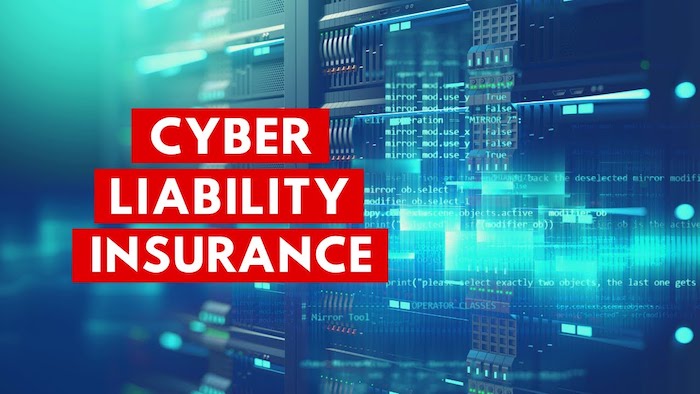In today’s digital age, cyber threats are more prevalent than ever before, with hackers and cybercriminals constantly finding new ways to exploit vulnerabilities in computer networks and systems. For businesses of all sizes, this means that cybersecurity risks are not just a possibility, but a reality that must be taken seriously.
To mitigate these risks, many organizations are turning to cyber insurance, a type of insurance designed specifically to protect against the financial losses and damages that can result from a cyber attack. But what exactly is cyber insurance, and how does it work?
In this comprehensive guide, we’ll take an in-depth look at cyber insurance, including what it is, what it covers, and how to choose the right policy for your business. We’ll also explore key cybersecurity threats, risk management best practices, and emerging trends in the cyber insurance landscape. Whether you’re a small business owner or an IT professional, this guide will provide you with the knowledge and tools you need to protect your organization from the ever-evolving threat of cyber attacks.
What is Cyber Insurance?
Cyber insurance is a specialized type of insurance that is designed to help businesses and organizations mitigate the financial losses that can result from a cyber attack. Cyber insurance policies typically provide coverage for a range of expenses related to a cyber attack, including data breach response and recovery, business interruption losses, cyber extortion, and liability claims.
Cyber insurance policies can vary widely depending on the provider and the specific needs of the insured organization. Some policies may focus more on first-party losses (i.e., losses that the insured organization experiences directly), while others may offer more comprehensive coverage that includes both first-party and third-party losses (i.e., losses that other parties experience as a result of the insured organization’s actions or omissions).
In addition to helping organizations recover from a cyber attack, cyber insurance can also play an important role in risk management. By requiring insured organizations to implement specific cybersecurity measures, cyber insurance providers can help reduce the likelihood and severity of future cyber attacks.
Cybersecurity Threats Covered by Cyber Insurance
Cyber insurance policies typically cover a range of cybersecurity threats that can result in financial losses for an organization. Some of the most common threats covered by cyber insurance policies include:
- Data breaches: Cyber insurance policies can provide coverage for the costs associated with responding to and recovering from a data breach, including forensic investigations, notification to affected individuals, and credit monitoring services.
- Business interruption: Cyber attacks can disrupt normal business operations, leading to lost revenue and other economic losses. Cyber insurance policies can provide coverage for these types of losses, including income lost during downtime and extra expenses incurred to restore normal operations.
- Cyber extortion: Cyber criminals may use ransomware or other types of malware to extort money from an organization in exchange for unlocking or restoring access to encrypted data. Cyber insurance policies can provide coverage for the costs associated with responding to cyber extortion threats, including the ransom payment and the costs of investigating the attack.
- Network damage: Cyber attacks can cause physical damage to an organization’s computer systems or network infrastructure. Cyber insurance policies can provide coverage for the costs associated with repairing or replacing damaged hardware or software.
- Third-party liability: Cyber attacks can also result in legal claims brought by third parties, such as customers or vendors, who have been harmed by the attack. Cyber insurance policies can provide coverage for legal defense costs and damages awarded in these types of lawsuits.
It’s important to note that not all cyber insurance policies are created equal, and the coverage provided can vary widely depending on the specific policy and insurer. Organizations should carefully evaluate their cybersecurity risks and needs before selecting a cyber insurance policy to ensure that they have adequate coverage in the event of a cyber attack.
Assessing Your Cyber Insurance Needs
Assessing your organization’s cyber insurance needs is a critical step in protecting against the financial losses and damages that can result from a cyber attack. When evaluating your cyber insurance needs, there are several factors to consider:
- Cybersecurity risks: The first step in assessing your cyber insurance needs is to understand your organization’s cybersecurity risks. Consider the types of data you store, the systems and networks you use, and the types of cyber attacks that are most likely to target your organization.
- Potential losses: Once you have a clear understanding of your organization’s cybersecurity risks, you can begin to estimate the potential financial losses that could result from a cyber attack. This can include costs related to data breach response and recovery, business interruption, cyber extortion, and liability claims.
- Existing coverage: It’s important to review your organization’s existing insurance policies to determine if they provide any coverage for cyber risks. For example, general liability policies may provide some coverage for third-party liability claims, but may not provide coverage for first-party losses such as business interruption.
- Coverage options: There are a variety of cyber insurance policy options available, ranging from basic coverage for data breach response to comprehensive coverage for a range of cyber risks. Consider your organization’s specific needs and budget when evaluating coverage options.
- Policy limits and deductibles: When selecting a cyber insurance policy, it’s important to carefully consider the policy limits and deductibles. Policy limits determine the maximum amount of coverage available, while deductibles represent the amount that the insured organization is responsible for paying before coverage kicks in.
By carefully assessing your organization’s cybersecurity risks and needs, you can select a cyber insurance policy that provides adequate coverage for your organization’s unique risks and budget.
Choosing a Cyber Insurance Provider:
When selecting a cyber insurance provider, there are several factors to consider:
- Reputation: Research the provider’s reputation and experience in the cyber insurance industry. Look for providers with a strong track record of handling claims and providing effective risk management solutions.
- Coverage options: Consider the provider’s coverage options and whether they align with your organization’s specific needs. Some providers may specialize in certain types of cyber risks, while others offer more comprehensive coverage.
- Policy terms and conditions: Carefully review the provider’s policy terms and conditions, including policy limits, deductibles, and exclusions. Make sure you fully understand the scope of coverage and any limitations or restrictions.
- Premiums and fees: Consider the provider’s premiums and any fees associated with the policy. Make sure the policy fits within your organization’s budget and that there are no hidden fees or charges.
Cyber Insurance Claims Process:
In the event of a cyber attack, the claims process can be complex and time-consuming. Here are some key steps in the cyber insurance claims process:
- Notify your provider: As soon as possible after a cyber attack, notify your cyber insurance provider and provide them with the necessary information to begin the claims process.
- Document the damage: Keep detailed records of the damage and losses resulting from the cyber attack, including any financial losses, data breach response and recovery costs, and business interruption losses.
- Investigate the cause: Your provider will likely conduct an investigation into the cause of the cyber attack to determine if the claim is covered under the policy.
- Submit the claim: Submit a formal claim to your provider, including all supporting documentation and evidence of the damages.
- Work with your provider: Throughout the claims process, work closely with your provider to provide any additional information or documentation as needed and to ensure that the claim is handled efficiently and effectively.
By carefully selecting a cyber insurance provider and understanding the claims process, organizations can help protect themselves against the financial losses and damages that can result from a cyber attack.
Cyber Insurance Premiums and Costs:
Cyber insurance premiums and costs can vary widely depending on a range of factors, including the size and industry of the insured organization, the level of risk associated with the organization’s cyber activities, and the scope of coverage provided by the policy. Here are some key factors to consider when evaluating cyber insurance premiums and costs:
- Risk assessment: The level of risk associated with an organization’s cyber activities can have a significant impact on premiums and costs. Insurers will typically conduct a risk assessment to determine the level of risk and adjust premiums accordingly.
- Coverage options: The scope of coverage provided by a cyber insurance policy can also impact premiums and costs. More comprehensive coverage will generally result in higher premiums, while more limited coverage may be more affordable.
- Deductibles: The deductible is the amount that the insured organization is responsible for paying before coverage kicks in. Higher deductibles can help reduce premiums, but may also increase the financial burden on the insured organization in the event of a cyber attack.
- Policy limits: Policy limits represent the maximum amount of coverage available under the policy. Higher policy limits can increase premiums, but can also provide greater protection against large losses.
Cyber Insurance and Risk Management:
While cyber insurance can provide financial protection in the event of a cyber attack, it is just one component of a comprehensive cyber risk management strategy. Here are some key ways that cyber insurance can be integrated into a broader risk management program:
- Risk assessment: Conduct a thorough risk assessment to identify the specific cyber risks facing the organization and develop strategies for mitigating those risks.
- Cybersecurity measures: Implement robust cybersecurity measures, such as firewalls, intrusion detection systems, and employee training programs, to help prevent cyber attacks from occurring.
- Incident response planning: Develop an incident response plan that outlines the steps to take in the event of a cyber attack, including notifying the insurer and filing a claim.
- Regular reviews: Regularly review and update the organization’s cyber risk management strategy, including the scope of coverage provided by the cyber insurance policy.
By integrating cyber insurance into a broader risk management program, organizations can help protect themselves against the financial losses and damages that can result from a cyber attack while also taking proactive steps to mitigate cyber risks.
Cyber Insurance Trends and Future Outlook:
The cyber insurance market has grown rapidly in recent years as organizations of all sizes seek to protect themselves against the financial losses and damages that can result from a cyber attack. Here are some key trends and future outlook for the cyber insurance industry:
- Increasing demand: With the continued rise in cyber attacks and data breaches, demand for cyber insurance is expected to continue to grow. This trend is likely to be driven by both regulatory requirements and a growing awareness of the risks associated with cyber activities.
- Evolving coverage options: As the cyber insurance market matures, insurers are likely to continue to develop and refine coverage options to meet the evolving needs of organizations. This may include more specialized coverage for specific types of cyber risks or more comprehensive coverage for a broader range of cyber threats.
- Higher premiums and deductibles: As cyber risks continue to increase, insurers may need to raise premiums and deductibles to maintain profitability and manage risk. This trend may be particularly pronounced for organizations with high levels of cyber risk or those operating in industries with a higher risk profile.
- Integration with risk management: Cyber insurance is increasingly being integrated into broader risk management strategies, with organizations taking a more proactive approach to managing cyber risks. This trend is likely to continue as organizations seek to minimize the financial impact of cyber attacks while also improving their overall cyber resilience.
FAQs:
- What is cyber insurance?
Cyber insurance is a type of insurance policy that provides financial protection in the event of a cyber attack or data breach. It typically covers losses and damages related to data loss or theft, business interruption, liability, and extortion.
- What types of cybersecurity threats are covered by cyber insurance?
Cyber insurance policies may cover a range of cyber threats, including hacking, malware, ransomware, denial of service attacks, and other forms of cyber crime. The specific scope of coverage will depend on the policy and provider.
- How do I assess my cyber insurance needs?
Assessing your cyber insurance needs involves evaluating your organization’s level of risk, the potential financial impact of a cyber attack, and the scope of coverage needed to protect against those risks. It may be helpful to work with a qualified insurance professional to evaluate your specific needs.
- How do I choose a cyber insurance provider and navigate the claims process?
When selecting a cyber insurance provider, it is important to evaluate factors such as coverage options, premiums and costs, deductibles, and policy limits. Once a policy is in place, it is important to understand the claims process and have a clear incident response plan in place to facilitate the claims process in the event of a cyber attack.
- How do cyber insurance premiums and costs relate to risk management?
Cyber insurance is just one component of a comprehensive cyber risk management strategy. To effectively manage cyber risks, it is important to implement robust cybersecurity measures, conduct regular risk assessments, and integrate cyber insurance into broader risk management plans. Higher levels of risk may result in higher premiums and costs for cyber insurance policies.
- What are some trends and future outlook for the cyber insurance industry?
The cyber insurance industry is expected to continue to grow as organizations seek to protect themselves against the financial losses and damages associated with cyber attacks. Key trends may include evolving coverage options, higher premiums and deductibles, and integration with broader risk management strategies.




